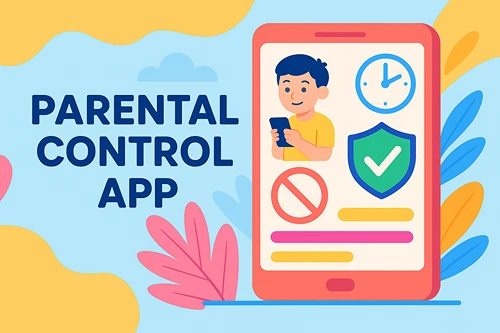5 Early Signs Your Child Could Benefit from Podiatric Care
Many parents don’t expect to think about foot care until later in life, but the truth is that foot problems can begin in childhood. While it might be easy to brush off the occasional complaint of sore feet or awkward walking as “just a phase,” these subtle signs can be early indicators of underlying issues. Detecting concerns early is key to preventing long-term complications.
I. Introduction
Podiatric care for children focuses on diagnosing and treating foot and lower limb conditions in growing kids. According to a study published in the Journal of Foot and Ankle Research, foot problems are common in children, with up to 30% of kids experiencing foot pain at some point. Since children are still developing, prompt intervention from a pediatric podiatrist can ensure proper growth, alignment, and function. Understanding what to watch for can make all the difference in your child’s comfort and long-term mobility.
II. Frequent Complaints of Pain
A. Morning heel pain
If your child frequently complains of heel pain when getting out of bed, this could be a red flag. Morning heel pain is a common symptom of Sever’s disease, a condition linked to the growth plate in the heel bone. It often affects active children, especially those involved in sports. Ignoring this sign can lead to prolonged discomfort and difficulty participating in physical activities.
Incorporating podiatric care for children at the first sign of heel pain can help alleviate symptoms and prevent worsening. A pediatric podiatrist can recommend appropriate footwear, stretching routines, and lifestyle adjustments to support your child’s heel health.
B. Pain after activity
Does your child often wince, limp, or avoid walking after playtime or sports? Pain after physical activity is not just fatigue-it could signal early joint or structural problems. Conditions like plantar fasciitis, stress fractures, or poor arch support may be to blame.
Children foot problems often become more noticeable after high-impact activity. An evaluation by a pediatric podiatrist can pinpoint the root cause and offer corrective solutions. Timely intervention ensures your child can enjoy physical activities without pain.
C. Persistent toe soreness
Toe soreness that doesn’t resolve with rest or better footwear may suggest a deeper issue. Children may have difficulty expressing the exact problem, so if your child consistently avoids wearing closed shoes or complains about their toes, take note.
This discomfort might stem from nail conditions, pressure-related issues, or improper toe alignment. A professional in podiatric care for children can assess whether there’s a need for custom orthotics, treatment for ingrown toenails in children, or other therapies.
III. Changes in Walking Pattern
A. Tiptoe walking
Tiptoe walking in toddlers can be normal at certain developmental stages, but if it continues beyond age two or becomes the dominant walking pattern, it may indicate a neurological or muscular issue. Known as idiopathic toe walking, this behavior can also stem from shortened Achilles tendons.
A tiptoe walking toddler should be evaluated by a pediatric podiatrist. Through early intervention, including stretches, orthotic devices, or physical therapy, many children can transition to a more stable and balanced gait. Addressing it early can also help avoid future joint or spine issues.
B. Limping or dragging feet
Any unexplained limp, especially if it persists for more than a few days, warrants attention. Limping can be caused by anything from minor injuries to more serious structural concerns. Children may unconsciously alter their gait to avoid pain, leading to muscle imbalances or joint strain.
In podiatric care for children, limping is one of the clearest signs a child needs a podiatrist. A full biomechanical assessment can uncover whether the problem lies in the feet, knees, or hips, and create a tailored treatment plan to correct it.
C. Uneven shoe wear
Check the soles of your child’s shoes. If you notice uneven wear patterns-like one shoe being more worn on the inside or heel-this could indicate an imbalance in their gait. This may be due to overpronation, flat feet, or misalignment.
These common foot issues in kids are easily missed until they begin affecting posture or causing discomfort. Gait abnormalities in children can result in long-term musculoskeletal issues if left untreated. Early podiatric evaluation can prevent the development of more complex orthopedic problems and improve overall foot function.
IV. Noticeable Foot Deformities
A. Flat feet concerns
Kids flat feet are common, especially in younger children. However, if your child continues to have low or absent arches past the toddler years, or complains of pain, it could be a sign of a structural issue. Flat feet can affect balance, posture, and lead to fatigue.
A pediatric podiatrist can determine whether your child’s flat feet require orthotics or physical therapy. Podiatric care for children can correct or manage this condition early, reducing the chances of chronic pain and mobility issues later in life.
B. Inward-turning ankles
Some children walk with their ankles or feet turning inward, known as “in-toeing.” This can cause awkward walking and tripping. It might be caused by tibial torsion, femoral anteversion, or foot alignment problems.
Left unchecked, inward turning can lead to poor posture and strain on joints. A podiatrist can assess gait and recommend corrective exercises or orthotics, improving alignment and confidence in movement.
C. Curled or overlapping toes
If your child has toes that overlap or curl under, especially if they cause discomfort or make it difficult to wear shoes, this could indicate muscle imbalance or developmental irregularities. Hammertoes and claw toes can also occur in children.
These structural issues can worsen over time without podiatric care. A pediatric podiatrist may recommend stretching, taping, or even minor corrective procedures to help your child walk comfortably and develop properly.
V. Skin and Nail Irregularities
A. Recurring ingrown toenails
Ingrown toenails in children are more than just a nuisance-they can become infected and painful if not treated properly. If your child regularly complains about their big toe hurting or has visible swelling and redness around the nail, it should be examined.
A specialist in podiatric care for children can offer safe and effective treatment, preventing further discomfort or infection. They may also teach proper trimming techniques and recommend footwear to reduce the risk of recurrence.
B. Calluses or blisters
While occasional blisters or calluses may be normal for active kids, persistent or painful ones can be signs of improper foot mechanics or ill-fitting shoes. Friction from abnormal walking patterns can also cause these skin issues.
When to see a podiatrist becomes clear if these skin concerns don’t resolve or interfere with your child’s daily activities. A pediatric podiatrist can evaluate gait and recommend custom inserts or better shoe options for long-term comfort.
C. Unusual skin color or texture
Discoloration, scaling, or unusual texture on the feet may indicate fungal infections, circulation issues, or skin conditions like eczema. Children may not always mention itching or pain, so parents should watch for visual signs.
Involving a podiatrist early can ensure the proper diagnosis and treatment. Podiatric care for children isn’t just about bones and joints-it also includes maintaining healthy skin and nails.
VI. Conclusion
Recognizing subtle signs early can spare your child from chronic discomfort and mobility challenges later in life. Foot issues may not always be dramatic, but small complaints or changes in walking patterns can be the first clue something isn’t right.
If you’re noticing any of these signs your child needs a podiatrist, don’t wait. With expert foot care for kids, your child can grow confidently and comfortably. Podiatric care for children is a proactive step toward supporting their health from the ground up.



 Author bio: Cora Gold is the Editor-in-Chief of women’s lifestyle magazine,
Author bio: Cora Gold is the Editor-in-Chief of women’s lifestyle magazine, 





